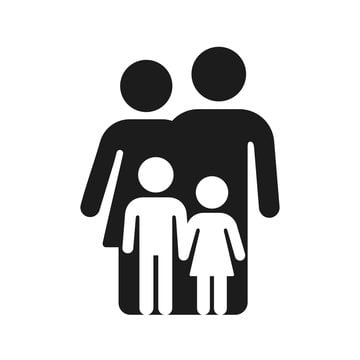Nurturing Peacemakers: Empowering Children with Conflict Resolution Skills
In today's world, conflict is unavoidable. Equipping children with effective conflict resolution skills is not merely beneficial; it's essential for their development into empathetic, compassionate, and responsible adults. Schools play a pivotal role in fostering this crucial life skill, creating environments where peaceful solutions are valued and practiced. This article explores fifteen practical strategies to cultivate peacemakers within the school setting.
1. Role-Playing: Stepping into Others' Shoes
Through engaging role-playing exercises, children can explore different perspectives within conflict scenarios. By acting out various roles, they gain a deeper understanding of the emotions and motivations involved, paving the way for finding common ground and mutually agreeable solutions.
2. Storytelling: Lessons from Literature
Children's literature offers powerful tools for teaching conflict resolution. Books such as "The Recess Queen" provide relatable narratives that spark discussions about character choices, conflict escalation, and effective resolution strategies. These discussions help children analyze situations and consider alternative approaches.
3. Mediation: Becoming Peace Facilitators
Training children in mediation techniques empowers them to act as neutral facilitators between peers. This process teaches responsibility, problem-solving, and active listening skills while fostering a sense of community ownership in conflict resolution.
4. Active Listening: Hearing Beyond Words
Active listening is paramount in conflict resolution. Teaching children to truly listen, to paraphrase what they hear, and to validate others' feelings fosters empathy and understanding, paving the way for constructive dialogue.
5. Empathy Building: Walking in Another's Shoes
Empathy is the cornerstone of peaceful conflict resolution. By encouraging children to consider the perspectives and feelings of others, they learn to approach conflicts with compassion and understanding, leading to more collaborative solutions.
6. Peer-Led Discussions: Learning from Shared Experiences
Creating opportunities for open discussions allows children to share their experiences with conflict, learn from one another's successes and mistakes, and collaboratively brainstorm effective resolution strategies. This peer-to-peer learning fosters a supportive and collaborative environment.
7. Nonviolent Communication: Expressing Needs Respectfully
Teaching children nonviolent communication skills helps them express their thoughts and feelings without resorting to aggression or violence. This involves learning how to articulate needs clearly and respectfully, while considering the needs of others.
8. Celebrating Cultural Diversity: A Global Perspective on Conflict
Recognizing and valuing cultural diversity broadens children's understanding of different approaches to conflict resolution. This fosters appreciation for diverse perspectives and helps them navigate conflicts in a more inclusive and sensitive manner.
9. Classroom Meetings: Creating a Safe Space for Dialogue
Establishing regular classroom meetings provides a safe and structured space for children to voice concerns, discuss conflicts, and collaboratively develop solutions. This promotes open communication, builds community, and empowers children to actively participate in conflict resolution processes.
10. Collaborative Problem-Solving: Teamwork for Peaceful Outcomes
Encouraging collaborative problem-solving emphasizes teamwork and compromise as essential elements of conflict resolution. Children learn to work together, share ideas, and negotiate solutions that address everyone's needs.
11. Anti-Bullying Campaigns: Promoting a Culture of Respect
Implementing comprehensive anti-bullying campaigns educates children about the harmful effects of bullying and equips them with strategies for peaceful intervention and reporting. This creates a school environment where bullying is not tolerated and conflict is addressed proactively.
12. Teaching Forgiveness: Healing and Moving Forward
Understanding and practicing forgiveness is a crucial element of conflict resolution. Discussions about forgiveness help children process emotions, heal from conflict, and move forward in a constructive manner. It fosters reconciliation and strengthens relationships.
13. Recognizing Positive Behaviors: Reinforcing Peaceful Actions
Acknowledging and praising children's positive conflict resolution efforts reinforces the importance of these skills. Positive reinforcement motivates children to continue practicing and refining their peacemaking abilities.
14. Celebrating Differences: Fostering Inclusion and Understanding
Organizing multicultural events and activities celebrates the diversity within the school community. This fosters an inclusive environment where differences are valued and conflicts are less likely to arise from misunderstandings or prejudice.
15. Ongoing Support: A Collaborative Approach to Peacebuilding
Consistent support for teachers, parents, and students is vital for long-term success in conflict resolution. This includes providing resources, training, and ongoing professional development to ensure the effective implementation and reinforcement of these crucial life skills.
Teaching children conflict resolution is an ongoing process, requiring consistent effort and a collaborative approach. By integrating these strategies into the school environment, we empower the next generation of peacemakers, contributing to a more harmonious and understanding world. How do you encourage peaceful conflict resolution in your community?





